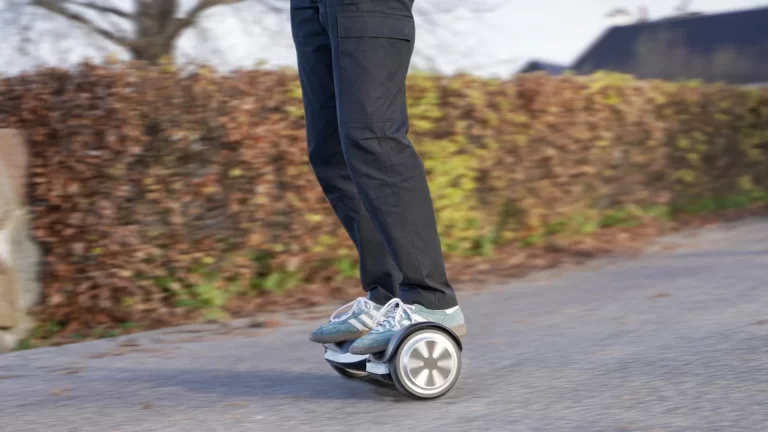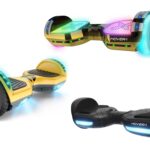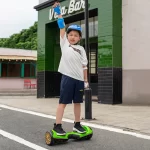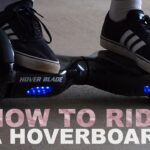Hoverboards burst onto the personal transportation scene several years ago and quickly became one of the hottest new gadgets around. With their futuristic look and ability to effortlessly glide riders across smooth surfaces, it’s no wonder hoverboards appeal to kids and adults alike.
A key part of the hoverboard’s widespread appeal is the exhilarating sensation of gliding along at up to 10 mph with nothing but a couple of platforms beneath your feet. This begs the question – just how fast can these trendy new rides go? What factors impact hoverboard speed? And how can you stay safe while enjoying the thrill of hoverboarding?
Read on for a comprehensive look at hoverboard speeds, along with tips for safe riding no matter how fast you decide to go.
Hoverboard Top Speeds
Most hoverboards on the market today can reach top speeds somewhere between 6 mph on the low end up to 10 mph on the high end. Here’s a breakdown of the max speeds for some of the top models:
- Swagtron T6: Up to 12 mph
- Halo Rover: 10 mph
- Epikgo Sport: 10 mph
- Razor Hovertrax 2.0: 8 mph
- Swagtron T580: 8 mph
- Segway miniPRO: 10 mph
As you can see, several popular hoverboard models can go 10 mph or faster. However, speed capabilities vary quite a bit depending on the make and model. Budget boards often top out at 6 mph, while premium options boast faster potential speeds.
Keep in mind that the speeds listed above represent each hoverboard’s absolute maximum under ideal conditions. You likely won’t reach those top speeds, especially when just learning to ride. Plus, real-world conditions like rough terrain and hills will slow you down.
Factors That Impact Hoverboard Speed
A hoverboard’s maximum speed tells only part of the performance story. Several other key factors also impact how fast you’ll be able to go. These include:
Rider Weight
Heavier riders may experience slower speeds than lighter ones, since the motors have to work harder to maintain momentum. Most hoverboards have a weight capacity between 220 to 265 pounds.
Battery Charge
Like most battery-powered devices, hoverboards start to lose steam as the battery charge decreases. With a full charge you’ll enjoy optimal speeds, while low batteries can slow you down.
Terrain
Smooth, flat, dry surfaces allow hoverboards to reach top speeds more safely. Rough roads, wet surfaces, steep hills and inclines will require lower speeds.
Wind Resistance
Headwinds and crosswinds require hoverboards to work harder, reducing your potential speed. Very windy days impact performance.
Temperature
In very cold weather, hoverboard batteries and motors lose some efficiency. You’ll get optimal speed performance in mild to warm conditions.
Hoverboard Safety Speed Recommendations
Hoverboard speeds sound exciting, but how fast should you actually go – especially if you’re a beginner? Like any wheeled mode of transportation, rider safety should come before speed thrills.
To help prevent accidents and injuries, consider these hoverboard safety speed tips:
- Beginners should stay under 6 mph while getting comfortable balancing and steering
- Novice riders can work up to 8-10 mph once basic skills are mastered
- Even experienced riders should slow down for rough terrain and congested areas
- Helmets and protective gear reduce injury risks at any speed
- Obey all pedestrian laws and avoid vehicles and traffic when possible
- Customize speed settings if available on your hoverboard model
- Try lower speed modes when sharing your hoverboard with new riders
While hoverboard safety largely comes down to common sense, staying aware of both your machine’s capabilities and your own skill level goes a long way in preventing dangerous speed-related mishaps.
Maintaining Safe Speeds Through Battery Charge Cycles
In addition to controlling your speed when actually riding, you can promote safety across every hoverboard session by taking good care of your battery.
Proper charging, storage and general battery maintenance impact performance over time. Follow these tips for safe battery usage:
- Fully charge batteries before the first use
- Plug in after each ride to avoid fully draining battery
- Use only the charging cable made for your model
- Inspect battery and connections prior to rides
- Store hoverboard batteries at room temperature when possible
- Avoid exposing batteries to extreme heat or cold
By keeping batteries properly maintained and at peak charging capacity, you ensure consistent speeds and reduce safety risks like sudden power loss.
The Need for Hoverboard Speed
At the end of the day, hoverboard speed holds an obvious appeal. Gliding effortlessly at up to 10 mph with the wind against your face is a uniquely fun sensation. Just be sure to celebrate that thrill safely!
Start slow, wear protection, follow traffic and pedestrian laws in your area, and get to know your hoverboard well. With responsible riding habits, you can enjoy zipping around at max speed worry-free. Just take time to build key balancing and steering skills before chasing new velocity records.
Even with safety precautions, hoverboarding holds inherent risks. But a bit of common sense goes a long way. By knowing the top speeds your device can handle and riding within your personal limits, hoverboard thrills can safely be yours.

With over a decade of experience in electric mobility and a degree in Mechanical Engineering, Moshe is the expert behind HoverboardsInfo.com. His background includes designing and testing hoverboards, providing readers with trusted reviews and insights. For the latest trends and expert advice, follow Moshe on Instagram.





